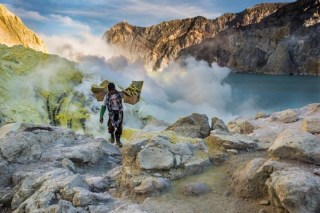Indigenous Peoples around the world are suffering disproportionately from the impacts of pollution. After surveying close to 700 articles covering different disciplines and regions of the world, a research team led by Helsinki University and involving McGill has highlighted key factors that contribute to this situation. These include Indigenous Peoples’ reliance on traditional practices of hunting, fishing, and gathering berries in areas where the land, water and wildlife are polluted; the disproportionate siting of polluting infrastructures such as mines and pipelines in their communities; the poor quality of water to which they have access; and the relatively low levels of governmental support available to them. But the research also suggests that Indigenous Peoples are contributing to limiting pollution in different ways, including through environmental monitoring and global policy advocacy, as well as through legal battles and local resistance to polluting activities.
“This is really a human rights issue. We all have the right to clean air, water and food. Unfortunately, millions of Indigenous Peoples worldwide do not,” said Niladri Basu from McGill’s Department of Natural Resource Sciences and School of Human Nutrition, and one of the authors of the study that was recently published in Integrated Environmental Assessment and Management. “Greater engagement of Indigenous Peoples in environmental governance can help to incorporate Indigenous Peoples’ social, spiritual, and customary values into assessments over environmental quality and ecosystem health.”
“All the literature reviewed provides clear evidence that Indigenous Peoples are largely and heavily affected by polluting activities both through their exposure and vulnerability, and that much of this pollution is linked to broader patterns of colonization,” says Dr. Álvaro Fernández-Llamazares, from the Faculty of Biological and Environmental Sciences at the University of Helsinki, who led the study. “However, we also note that, all over the world, Indigenous Peoples are developing innovative strategies to limit, abate or stop ongoing pollution and fight to prevent it from the outset. I was particularly inspired by the numerous examples where Indigenous communities and scientists have built successful partnerships to martial global support for the defence of environmental justice.”
Key findings:
- There are mounting cases worldwide in Indigenous Peoples, of a range of ill health outcomes that are linked to pollution, such as certain cancers, respiratory diseases, high rates of miscarriage, kidney diseases, etc.
- In the past, many of the infrastructures associated with pollution, such as mines, pipelines or waste incinerators were located on Indigenous land. Overall, water contamination has resulted in greater exposure to mine wastes among Native Americans than other populations. It is estimated that >600000 Native Americans in the Western United States live within 10 km from an abandoned mine, having an increased likelihood of elevated exposures to several pollutants.
- Levels of water quality and sanitation in Indigenous Peoples’ lands are generally low. Even where Indigenous Peoples have access to treated or piped water, this water is often of poorer quality than in other areas. For example, 20% of all drinking water advisories in Canada are in indigenous communities, who only make up 5% of the country’s population.
- For some Indigenous Peoples harvesting and consuming traditional foods (such as fish and wildlife that may be impacted by pollution), and attachment to ancestral lands may have cultural benefits that make them willing to take certain risks despite the dangers for their health. For example, many members of the Aamjiwnaang First Nation in Ontario, whose lands are surrounded by the largest complex of petrochemical plants in Canada, have repeatedly asserted that they would never leave their ancestral lands, regardless of concerns for high rates of cancer and respiratory diseases in their communities.
- Indigenous Peoples’ marginalization, and physical distance from centres of power, and from environmental management bodies often decreases their capacity to defend their stakes in environmental pollution and their ability to take advantage of protection from national pollution laws.
- Indigenous Peoples worldwide are developing and contributing to innovative strategies to limit pollution or prevent it from the outset. Resistance against polluting activities includes actions such as protests, cultural resistance camps, calls for policy action, occupation of resource infrastructures (e.g., pipelines, land- fills), and litigation to hold polluters accountable.
- The activities of Indigenous Peoples have, in some cases, prevented the installation of polluting industries on their lands. However, these campaigns are not always articulated as solely a crusade against pollution, but rather as conflicts in defence of land rights, sovereignty, and justice.
********************
To read “A State-of-the-Art Review of Indigenous Peoples and Environmental Pollution” by Fernández-Llamazares Á, Garteizgoeascoa M, Basu N, Brondizio ES, Cabeza M, Martínez-Alier JM, McElwee P, Reyes-García V (2020) Integrated Environmental Assessment and Management. doi: https://doi.org/10.1002/ieam.4239
The research was funded by the Academy of Finland and the Kone Foundation, and the BBVA Foundation.


